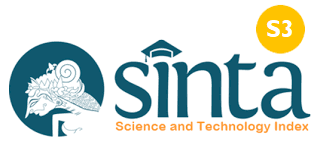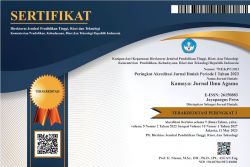Purgatori Dalam Katolik Dan Neraka Dalam Islam
Kajian Komparatif Atas Konsep Kehidupan Setelah Kematian
DOI:
https://doi.org/10.37329/kamaya.v8i2.4343Keywords:
Purifying Fire, Hell, PurgatoryAbstract
The concept of purifying fire, whether in the form of Purgatory in Catholic teachings or Hell in Islam, is an important topic in the eschatological studies of both religions. Purgatory is understood as a temporary stage of purification for souls who die in a state of grace but still carry minor sins, while Hell in Islam is described as a place of eternal punishment for those who disbelieve or commit major sins. This study aims to compare the concepts of Purgatory and Hell from the perspectives of Catholicism and Islam, as well as to analyze the theological implications of both concepts. The research method employed is a literature review, involving the collection and analysis of data from various literary sources such as the Bible, the Qur’an, Hadith, and theological works. The results of the study indicate that although there are differences in emphasis and description, both concepts share the same purpose, which is to emphasize the importance of living a righteous life and obeying God. In Catholicism, Purgatory functions as a mechanism of purification before entering Heaven, while in Islam, Hell serves as a place of punishment and a warning for humanity. Both concepts also reflect divine justice and mercy in addressing human sin.
References
Albertus, P. (2017). Riwayat Api Penyucian Dalam Kitab Suci Dan Tradisi. Yogyakarta: Kanisius.
Aris, N. (2009). Andai Surga Dan Neraka Tiada. Jakarta: Inti Media.
Adlini, M. N., Dinda, A. H., Yulinda, S., Chotimah, O., & Merliyana, S. J. (2022). Metode Penelitian Kualitatif Studi Pustaka. Edumaspul: Jurnal Pendidikan, 6(1), 974-980.
Bahasa, B. P. (2016). Kamus Besar Bahasa Indonesia. Jakarta: Balai Pustaka.
Brill, W. (1994). Tafsiran Surat Korintus. Bandung: Yayasan Kalam Hidup.
Dewata, M. A. (2024). Perbandingan Waktu Satu Hari Di Akhirat Dan Di Dunia Perspektif Tafsīr Mafātiḥ Al-Ghaib. Jakarta: Program Studi Ilmu Al-Quran Dan Tafsir Fakultas Ushuluddin Universitas Islam Negeri Syarif Hidayatullah Jakarta.
Dirno, D. (2022). Konsep Kekekalan Neraka Dalam Al-Qur’an (Analisis Kritis Atas Pendapat Ibnu Qayyimil Jauziyyah). Statement, 12(2), 16-34.
Ijen, A. N. (2021). Tinjauan Teologis Tentang Api Penyucian Dalam Ajaran Katolik Roma Didasarkan Pada Kebenaran Alkitab Dan Implikasinya Bagi Kehidupan Orang Percaya. Jurnal Kala Nea, 2(1), 1-13.
Indonesia, L. A. (2012). Al-Kitab. Jakarta: Lembaga Alkitab Indonesia.
Katolik, K. W. (2009). Kompendium Katekismus Gereja Katolik. Jakarta: Kanisius.
Lee, W. (2019). Pokok-Pokok Penting Di Dalam Alkitab. Jakarta: Yayasan Perpustakaan Injili Indonesia.
Moro, A. N. M. (2021). Tinjauanteologis Tentang Apa Penyusaian C. Jurnal Kala Nea, 2(1).
Maghfiro, N. (2018). Seberapa Panaskah Api Neraka?. From Https://Bincangsyariah.Com/Kolom/Seberapa-Panaskah-Api-Neraka/.
Muslim. (N.D.). Sahih Muslim, Fasal: Siksa Neraka (Juz 4 Ed.).
Mutmainnah, S. I. (2015). Konsep Jiwa Setelah Mati Menurut Mullā Ṣadrā. Ilmu Ushuluddin, 2(4), 389-404.
Palembang, S. Y. (2021). Penyucian Dalam Pengajaran Gereja Katolik. JSA, 4(12), 1-13.
Qomariyah, U. (2019). Neraka Dan Penghuninya. Semarang: Mutiara Aksara.
Ruseniati, M. A. (2023). Kristus Sebagai Rahasia Allah Dalam Pandangan Paulus Dan Implikasinya Bagi Tugas Pemberita Injil. Jurnal Pendidikan Indonesia, 4(10), 1069-1083.
Sarman, S. (2021). Semantik Kata-Kata Bermakna Neraka Dalam Al-Qur’an Perspektif Mufasir. Doctoral Dissertation, Institut PTIQ Jakarta.
Shihab, M. Q. (2007). Ensiklopedia Al-Qur’an: Kajian Kosakata. Tanggerang: Lentera Hati.
Situmorang, J. (2016). Menyingkapkan Misteri Dunia Orang Mati. Yogyakarta: ANDI.
Suparman, B. S. (2024). Dahlia Juliadil Veronica Zebua, Tinjauan Teologis Mengenai Konsep Purgatory Dan Implikasinya Terhadap Soteriologi. Diligentia: Journal Of Theology And Christian Education, 6(1), 57-75.
Downloads
Published
How to Cite
Issue
Section
License
Copyright (c) 2025 Kamaya: Jurnal Ilmu Agama

This work is licensed under a Creative Commons Attribution-ShareAlike 4.0 International License.
An author who publishes in the Kamaya : Jurnal Ilmu Agama agrees to the following terms:
- Author retains the copyright and grants the journal the right of first publication of the work simultaneously licensed under the Creative Commons Attribution-ShareAlike 4.0 License that allows others to share the work with an acknowledgement of the work's authorship and initial publication in this journal
- Author is able to enter into separate, additional contractual arrangements for the non-exclusive distribution of the journal's published version of the work (e.g., post it to an institutional repository or publish it in a book) with the acknowledgement of its initial publication in this journal.
- Author is permitted and encouraged to post his/her work online (e.g., in institutional repositories or on their website) prior to and during the submission process, as it can lead to productive exchanges, as well as earlier and greater citation of the published work (See The Effect of Open Access).
Read more about the Creative Commons Attribution-ShareAlike 4.0 Licence here: https://creativecommons.org/licenses/by-sa/4.0/.





